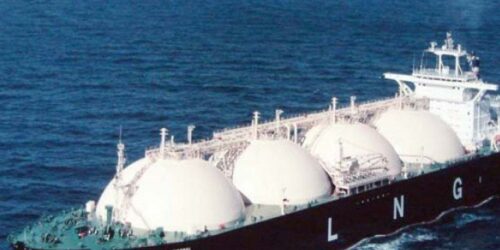The Ministry of Energy has moved a summary to the Federal Cabinet for ending subsidised gas rates for industries, including captive power plants, which would likely increase the prices, Topline Securities reported in a research on Tuesday.
Any increase in subsidised re-gasified liquefied natural gas (RLNG) price would significantly impact the Punjab-based textile players such as Nishat Mills Limited (NML) and Interloop Limited (ILP), as a 10 per cent increase in gas prices would impact the bottom-line of these companies by 2 per cent to 5 per cent.
“[The] Punjab-based textile players, which are getting RLNG at a subsidised rate of $6.5/mmbtu, will be the most affected; followed by other industries, if gas prices for the captive power plant, general industries and the fertiliser sector are also raised,” the research noted.
These players also get a concessionary electricity price of $9.5/unit and in the event of higher gas prices, they may switch to electricity usage at subsidised rate to negate the impact of higher RLNG prices.
Gul Ahmed Textile Mill (GATM), based in Sindh, is using natural gas for its power requirements and may have an earnings impact of 5 per cent on every 10 per cent increase in natural gas prices. The chemical sector will have an impact of 5 per cent to 6 per cent on every 10 per cent increase in gas prices.
The prices of urea will likely go up Rs35/bag if the government increases gas prices (fuel cost) for the fertiliser plants.
Lucky Cement and International Steel Limited (ISL) are likely to have an earnings impact of around 1 per cent to 2 per cent on every 10 per cent increase in natural gas prices.
The gas price hike will be cash flow positive for gas companies, including Sui Southern Gas Company (SSGC) and Sui Northern Gas Pipelines Limited.
The export-based sector in Punjab is getting RLNG at a subsidised flat rate of $6.5/mmbtu. Pakistan has recently accepted bids of $30.6/mmbtu for LNG supplies for December 2021 due to supply shortages,” the research said.
The subsidised rate offered to the export industry is also significantly lower than the notified RLNG price of $15/mmbtu by the Oil and Gas Regulatory Authority (Ogra) for October 2021.
Pakistan last increased gas prices in September 2020, where it marginally raised them by an average of 4 per cent for various sectors, including general industries, captive power plant, etc, which was not sufficient to cover for gas losses arrears.
The International Monetary Fund (IMF), in the last country report on Pakistan, said the stock of gas arrears has grown 0.1 per cent of GDP to 0.5 per cent of GDP in FY2020 and is estimated to grow to 0.6 per cent of GDP (Rs300 billion) in FY2021 led by delayed gas sale price adjustments, uncovered subsidies, UFG (unaccounted for gas losses) and collection shortfalls.
The IMF also emphasised the need to rationalise gas pricing and end cross sector subsidies to address the rising fiscal burden being faced by the country.







